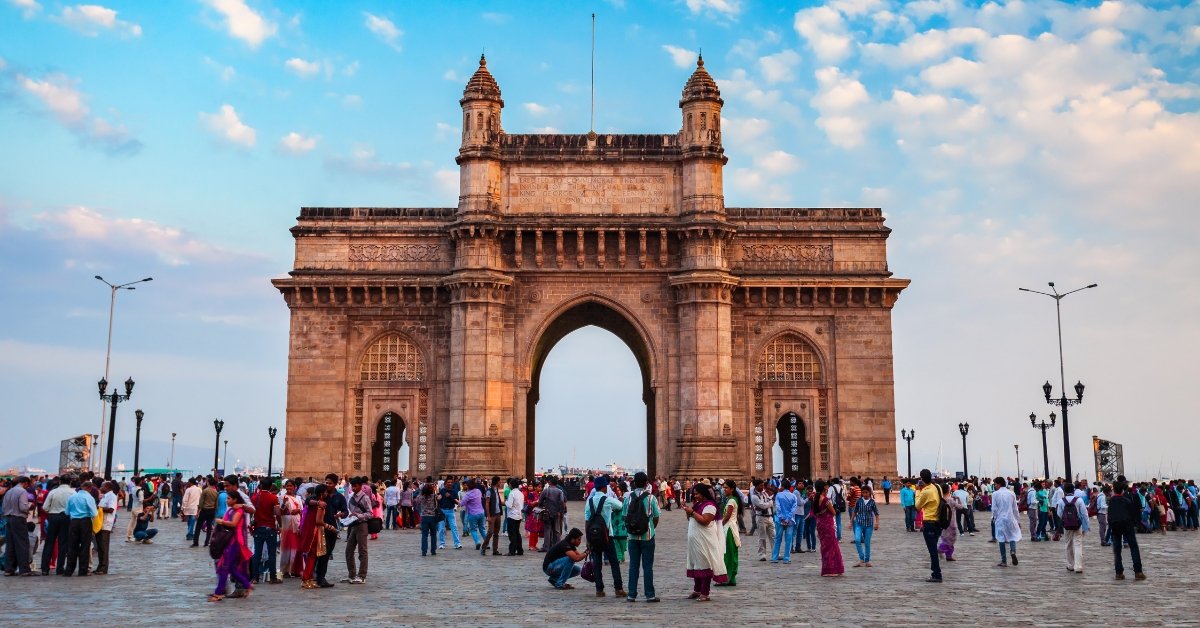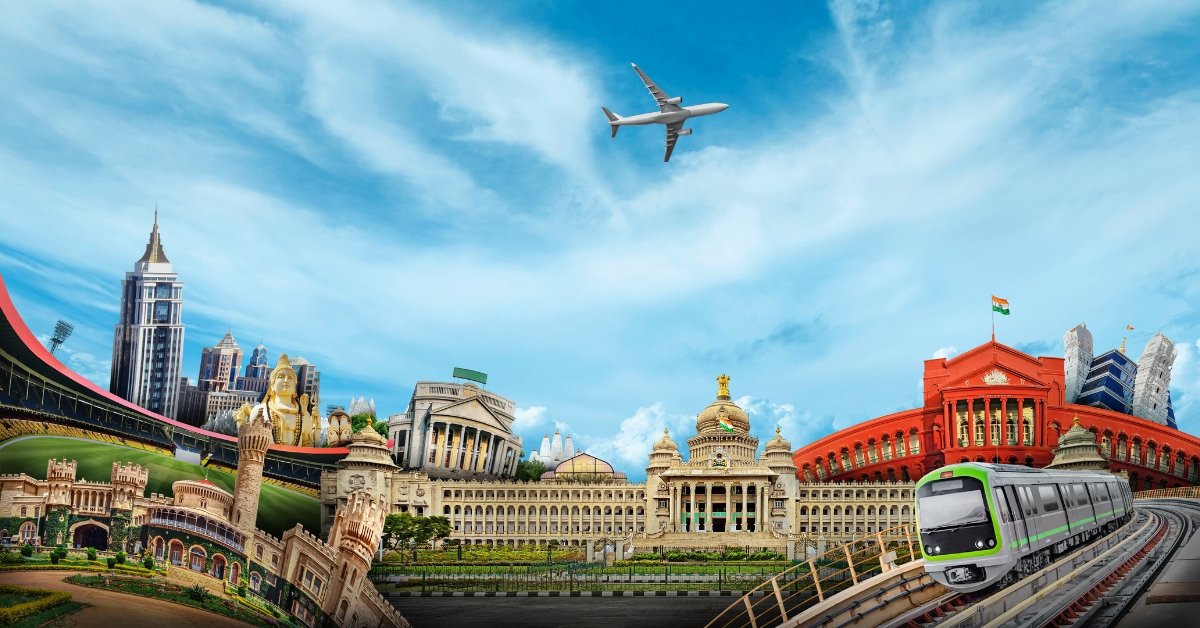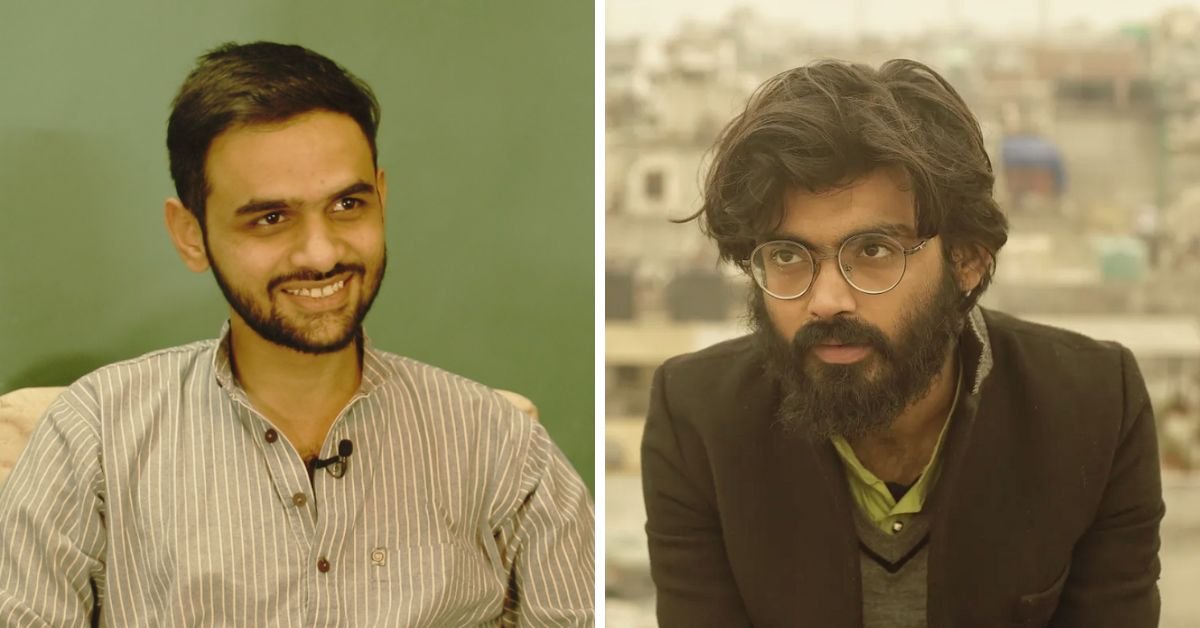Explore whether Mumbai’s economic might or Bangalore’s tech boom could make either city India’s second capital.
Table Of Contents
Introduction
Hey there, fellow thinkers and dreamers!
Have you ever wondered why India, with its massive size and diverse regions, sticks to just one capital city?
Since independence, New Delhi has been the undisputed administrative heart, housing Parliament, the Supreme Court, and all the key government offices.
However, in a country as vast and varied as ours, the idea of a second capital keeps popping up in conversations, petitions, and even political manifestos.
It is not just about splitting the load; it is about balancing power, boosting regional development, and maybe easing some of those north-south divides.
Today, we are focusing on two powerhouses: Mumbai, the bustling financial juggernaut on the West Coast, and Bangalore, the innovative tech haven in the South.
Could either step up as India’s second capital?
We have dug into history, crunched the latest updates on infrastructure and economy, and weighed the pros and cons.
Spoiler: It is not as straightforward as it sounds.
Let us break it down step by step, like we are chatting over chai.
India’s Constitution does not explicitly allow for a second capital right now.
Article 239AA gives Delhi its special Union Territory status, and any big change would need amendments, parliamentary nods, and probably a ton of state-level buy-in under Article 3.
It is doable in theory, but politically?
It is a minefield.
Countries like South Africa (with three capitals for different functions) or Bolivia (splitting executive and legislative roles) show it is possible, but India has not gone there yet.
Still, the buzz around Mumbai and Bangalore persists, fueled by their economic clout and strategic spots.
Historical Whispers
Let us rewind a bit.
The notion of a second capital is not new; it has been floating around since the 1950s.
Back then, during the linguistic reorganization of states, there were heated debates about making Bombay (now Mumbai) a centrally administered city or even a second capital.
The goal?
To balance the economic pull of the South and West against Delhi’s northern dominance.
However, regional pride won out, and in 1960, Maharashtra and Gujarat were carved out, with Mumbai staying as Maharashtra’s capital.
Fast-forward to 2012: A Mumbai city forum petitioned the Prime Minister to declare Mumbai the second capital, proposing a “Mahamumbai” that included Navi Mumbai and parts of Thane and Raigad.
It was all about better urban management and leveraging Mumbai’s global vibe.
Sadly, it gathered dust with no official action.
Bangalore’s story is similar but more recent.
In 2018, Karnataka’s then-Large and Medium Industries Minister R.V. Deshpande wrote to Prime Minister Narendra Modi, pitching Bengaluru (Bangalore’s official name) as the nation’s second capital.
He argued it would better integrate South India into national governance.
That same year, the Congress party’s manifesto promised Rs 1 lakh crore to develop Bengaluru with world-class infrastructure, positioning it as a second capital.
By 2022, voices like the president of the Federation of Karnataka Chambers of Commerce and Industry suggested making it the second financial capital to rival Mumbai.
These ideas stem from real needs, such as Delhi’s seasonal woes, such as winter pollution, or the desire for decentralized power.
However, they have mostly stayed as proposals, bogged down by politics and costs.
As of July 2025, no new bills or government statements promote this, but infrastructure booms in both cities keep the dream alive.
Mumbai

Mumbai’s case is strong if we are talking money and global connect.
It is India’s financial capital, generating about 6% of the national GDP.
Home to the Bombay Stock Exchange (BSE), National Stock Exchange (NSE), and the Reserve Bank of India (RBI), it is where big deals happen.
The city’s ports handle massive trade, and its cosmopolitan crowd draws talent from everywhere.
However, could it handle capital duties?
Let us look at the latest from 2025.
Mumbai’s undergoing a massive makeover.
The Navi Mumbai International Airport (NMIA) will open in May 2025, easing pressure on the existing one and boosting connectivity.
Metro lines are expanding rapidly.
Think underground routes will be fully functional by year-end.
Coastal roads and new bridges like the Carnac Bridge are slashing commute times.
Then there is the “Third Mumbai” plan: A huge urban extension across the harbour, three times larger than current Mumbai, aimed at becoming India’s next business hub.
Maharashtra’s Chief Minister has called it an economic powerhouse in the making.
Real estate is booming, too, with record property registrations in the first half of 2025 despite a 25% dip in housing sales nationwide.
Mumbai leads in data centres, with over half of India’s projected 1.46 gigawatt capacity by year-end.
Venture capital flowed in big $13.7 billion in 2024, rebounding strong.
Moreover, let us not forget cultural pulls: Bollywood, diverse food scenes, and that unbreakable spirit.
However, challenges loom.
Overpopulation (around 22 million in the metro area) means flooding, traffic nightmares, and strained infrastructure.
Maharashtra might fight tooth and nail against losing control of its capital.
Splitting governance could mean duplicating ministries, embassies, and bureaucracy, costing billions.
Here is a breakdown of Mumbai’s pros and cons:
| Aspect | Pros | Cons |
|---|---|---|
| Economic | Contributes 6% to GDP; hosts BSE, NSE, RBI; top in venture capital and data centers. | High costs to duplicate admin setup; competition from GIFT City in Gujarat. |
| Infrastructure | NMIA opening 2025; metro expansions; coastal roads; “Third Mumbai” as future business hub. | Flooding and traffic woes; overpopulation strains resources. |
| Geopolitical | Strategic Arabian Sea location; global connectivity for diplomacy. | Federal conflicts with Maharashtra; logistical splits could confuse operations. |
| Social/Cultural | Cosmopolitan vibe; Bollywood hub; diverse population. | Urban decay in slums; high living costs alienate locals. |
Trivia Time: Did you know Mumbai’s Chhatrapati Shivaji Maharaj International Airport is the second-busiest in India, handling over 50 million passengers annually? It is a gateway that could make diplomatic shuttles a breeze if it became a capital.
Bangalore

Now, shift south to Bangalore, often called Bengaluru these days.
It is the Silicon Valley of India, with IT giants like Infosys and Wipro calling it home.
The city drives Karnataka’s economy, which is targeting second place in industrial investments by 2025.
Recent events like Invest Karnataka 2025 drew proposals worth Rs 10 lakh crore (about $118 billion) in renewables, steel, semiconductors, and autos.
That is huge for a state aiming to compete globally.
Infrastructure-wise, 2025 looks promising.
Metro expansions are on track, with new lines connecting suburbs.
The suburban rail project and electric buses aim to cut traffic.
A second airport is in talks.
Locations like Tumakuru are being eyed to handle the boom.
The BBMP (Bruhat Bengaluru Mahanagara Palike) budget for 2025-26 is Rs 19,930 crore, and it focuses on roads, water, and green spaces.
Population-wise, Bangalore’s hitting 14.4 million in 2025, growing fast thanks to migrants chasing tech jobs.
Historical pitches paint Bangalore as a southern counterweight to Delhi.
That 2018 letter to Modi highlighted its IT prowess and mild climate no brutal winters here.
The Congress’s promise of massive funding was about creating world-class infrastructure.
In 2022, calls to make it the second financial capital aimed to challenge Mumbai’s monopoly.
Today, with Airbus and Tata setting up India’s first private helicopter assembly in Kolar (near Bangalore), it is flexing manufacturing muscles too.
But hurdles?
Plenty.
Potholed roads and water shortages are infrastructure lags.
As a state capital, Karnataka resists central control.
Civic issues like garbage management and flooding during monsoons are infamous.
Moreover, while tech-savvy, it is not as globally connected as Mumbai for diplomacy.
Check out this pros/cons for Bangalore:
| Aspect | Pros | Cons |
|---|---|---|
| Economic | IT hub; Rs 10 lakh crore investment proposals in 2025; pharma and defence clusters. | Over-reliance on IT; no major stock exchanges like Mumbai. |
| Infrastructure | Metro growth; second airport plans; helicopter facility; renewable energy push. | Poor roads, water crises; traffic jams despite expansions. |
| Geopolitical | Southern representation; mild weather for year-round ops. | Less international airports; state resistance to central admin. |
| Social/Cultural | Youthful, innovative crowd; garden city charm; medical tourism. | Language barriers for non-locals; urban sprawl eroding green spaces. |
Another Fun Fact: Bangalore is one of India’s major pharma clusters, with over 12 key sites, and it is also the garment capital, exporting billions of dollars annually.
Head-To-Head: Mumbai vs. Bangalore
Let us pit them against each other to make it crystal clear.
Both cities shine in different ways, but neither has a slam-dunk case for second capital status.
| Category | Mumbai | Bangalore |
|---|---|---|
| GDP Contribution | ~6% of India’s; financial powerhouse. | Drives Karnataka’s growth; IT-focused, targeting industrial top spot. |
| Population (2025) | ~22 million metro area. | ~14.4 million, growing rapidly. |
| Key Industries | Finance, Bollywood, ports, data centers. | IT, pharma, garments, defense, emerging manufacturing. |
| Infrastructure Highlights (2025) | NMIA, metro, coastal roads, “Third Mumbai”. | Metro expansion, second airport talks, helicopter assembly. |
| Historical Proposals | 1950s-60s debates; 2012 petition for Mahamumbai. | 2018 Modi letter; Congress manifesto; 2022 financial capital push. |
| Challenges | Overcrowding, floods, high costs. | Water scarcity, traffic, civic mismanagement. |
| Global Appeal | Cosmopolitan; major port and airport. | Tech innovation; pleasant climate; medical hub. |
Mumbai edges out on economic scale and global links, but Bangalore’s tech edge and southern equity make it a contender.
Cost-wise, shifting functions could run into trillions for either think new Parliament wings or ministry relocations.
Economic And Geopolitical Angles
Diving deeper, let us talk bucks and strategy.
Mumbai’s 2025 story is all about revival: $205 billion in national infra investments, with Mumbai getting a slice for roads and renewables.
It is the richest city, with high-rise living and bustling trade.
However, industries shifting to Gujarat (like GIFT City) pose threats.
Bangalore’s riding high on investments. Eighteen countries at Invest Karnataka 2025 pledged big in semiconductors and autos.
Karnataka’s industrial policy 2025-30 aims for balanced growth beyond Bangalore.
However, Union Budget snubs for city infra highlight centre-state tensions.
Geopolitically, a second capital could alternate sessions with Delhi in summer and Mumbai or Bangalore in winter to dodge pollution.
It would boost regional pride but risk inefficiency. Federalism is key: States guard their capitals fiercely.
Socially, both cities are melting pots.
Mumbai’s diversity mirrors India, while Bangalore’s youth (median age under 30) brings fresh ideas.
However, inclusivity matters; slums in Mumbai or migrant woes in Bangalore need fixing first.
Challenges And Realities
Honestly, friends, the roadblocks are huge.
Constitutional changes?
Tough in a divided Parliament.
Costs?
Billions amid other priorities like the Delhi-Mumbai Expressway.
Politics?
Maharashtra or Karnataka will not hand over easily.
Moreover, do we need it?
India’s federal setup works okay, with cities like Hyderabad or Chennai also in the mix informally.
Public sentiment in 2025?
Online chats highlight Mumbai’s decay or Bangalore’s chaos, but aspiration shines through.
There are no major movements, though the focus is on local fixes.
Wrapping It Up
So, can Mumbai or Bangalore become India’s second capital?
In theory, yes, Mumbai with its financial muscle and Bangalore with its innovative spirit.
But practically?
Not anytime soon, without massive reforms and consensus.
Mumbai might suit an economic second hub, while Bangalore could shine for tech and southern balance.
Either way, it is about decentralizing growth, not just titles.
What do you think?
Drop a comment below.
I would love to hear your take.
Moreover, if you enjoyed this deep dive, check out more articles on our site at THOUSIF Inc. – INDIA.
We have pieces on India’s urban evolution, tech trends, and more.
Stay curious, folks!






